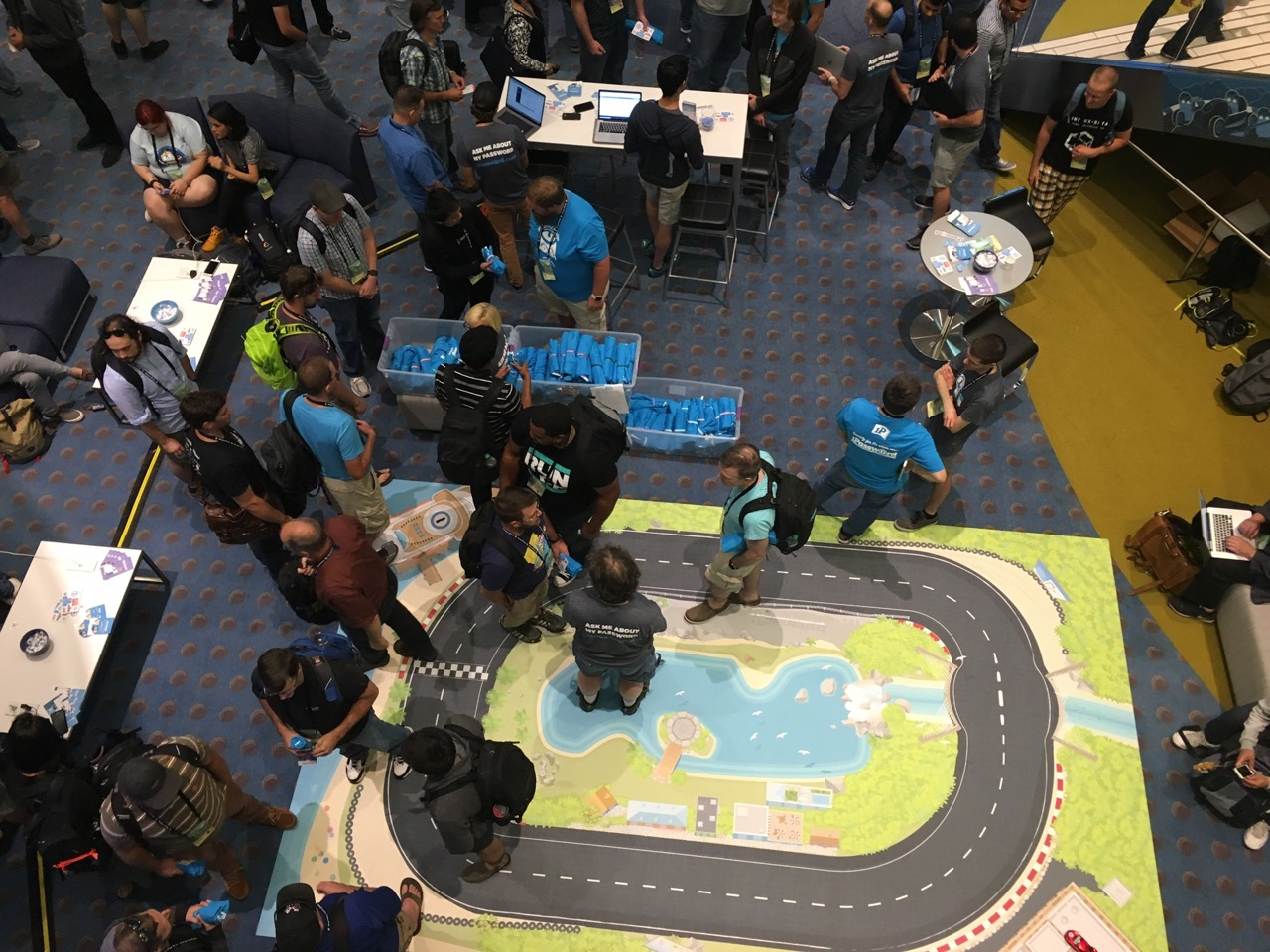Thanks to my employer, Netconomy, a colleague and I could attend this year’s edition of GopherCon. I’ve wanted to go there for years and now I finally had a chance to actually get to Denver for the biggest gathering of Gophers in the world 😄 So on Sunday, August 26, we boarded the plane taking us to Frankfurt, switch machine, and then spent another 9.5 hours in a Boing 747-400 to Denver.

The usual chicken-vs-paste meals later we arrived rather exhausted at Denver International Airport. Thanks to some construction-work going on there it’s probably the most complicated airport I’ve seen in recent history. It took us quite some time and a couple of calls with our Lyft-driver to find the right exit, but we eventually found the correct parking deck 🤪 Off we went to the “Mile-high city”!
Good thing we hadn’t booked any tutorials for the next day as we wanted to get to know the city and also getting some work done before focusing completely on the main event!
Some sight-seeing, Whole Foods, and working later we arrived at GopherCon on Tuesday morning, nearly awake and fully-motivated! By the way, putting a gift store right next to registration booth where you could purchase Gopher swag was just devious 😈
The talks
For half of the session talks there was just a single track but around lunch there were two talks/tutorials where three sessions were taking place in parallel. These had a length of 45 minutes while the single-track sessions took only 25 minutes. I really liked the format as it allowed to put highly domain-specific talks onto the schedule without forcing people into them who weren’t interested. In one such slot, for instance, Filippo Valsorda presented best-practices around the net package while people in another slot learnt about 3D rendering thanks to Hunter Loftis.
It’s hard to pick favourites here but if I had to pick, I’d give the price to Kavya Joshi for her talk about the Go scheduler (“The Scheduler Saga”) and Anthony Starks for “Go for Information Displays”. Thanks to the parallel tracks there are still a couple of sessions, though, like Jon Bodner’s “Go Says WAT?” that I have to watch on Youtube.
Some take-aways from these and other talks for me were:
- Anthony Starks has created a neat little presentation tool called deck.
- He also created a Go-binding for OpenVG, which can also be used with Deck to render the slides directly onto the screen without having to go through PNGs et al.
- gvt is officially retired in favour of Go modules.
- If you want to debug binary data, use “%q” as it prints them in a more usable way than “%v”.
- There is a Go implementation of yacc!
- Tons of Debian tools and services are already written in Go, such as manpages.debian.org.
Social life
After the first session-day there was also a social event taking place at the nearby Sculpture Park. I have no idea why it is called that given we only saw a single sculpture, but never mind.
On Wednesday evening there was another event sponsored by DigitalOcean at “The 1up”, a local barcade. We had a table reserved at Fogo de Chao right before that event and ate so much that we couldn’t stay for long. Great location, though, with a great bar and awesome arcade machines!
As Max had forgotten his wristband which acted as invitation to the event we also had lots of fun with the bouncer esp. as he was trying to pronounce our names 🙂
Community day
The two session days went by far too quickly! Luckily, though, that wasn’t the end of the event as there was still a day full of community projects left! Sadly, I had to fix a couple of problems at home and therefore mostly spent my time away from Go projects. That being said, Max and I at least started working on a little pet-project of ours which should make creating release-notes based on changed between releases easer in the future 😅
A single community day was just a bit too short when you’re used to sprints at Python conferences. There were also fewer people actively looking for help with their projects, which left the announcement whiteboards rather empty. If I get the chance again to attend next year then I hope I can bring something to the table myself. This year, it was mostly Ansible, though. As I still had fun I couldn’t complain 😉
The venue
Something else I couldn’t complain about was the venue. As with the Oregon Convention Center the Colorado Convention Center was huge, offering space for multiple large events taking place at the same time without people running over each other. There were always refreshments available and the queues to the lunch booths were manageable. If only there had been porridge also on the community day for breakfast 😫
In general, the organisation was flawless (from what I can tell)! The breaks were well-timed, there was captioning, and the air-condition was not set to kill (only to hurt 😅) so we didn’t have to leave the conference halls to warm up as happened on another event 😉 Big thanks to everyone involved with the event! Great job!
As I already wrote before, I really want to attend next year’s GopherCon in San Diego. I enjoyed my time in Denver so much that it was hard to leave. Next year there is also going to be a dotGo again, so with some luck, I will be attending two Go conferences + FOSDEM again 😍

Do you want to give me feedback about this article in private? Please send it to comments@zerokspot.com.
Alternatively, this website also supports Webmentions. If you write a post on a blog that supports this technique, I should get notified about your link 🙂